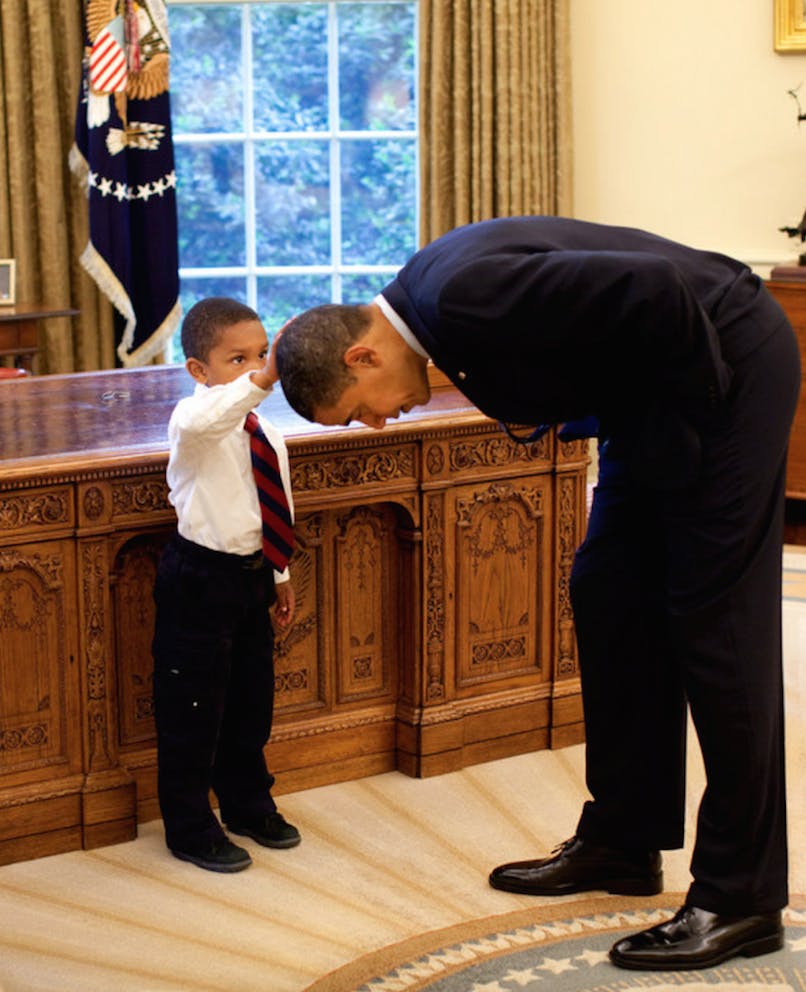Your 5 Year-Old is Already Racially Biased.
Here's what you can do it about it.
By Andrew Grant-Thomas

AC 360° study: African-American children more optimistic on race than whites.
Administrators at Fox Chapel Middle School in Spring Hill, Florida recently fired a teacher who gave her sixth graders an assignment asking them to consider how “comfortable” they would be in the company of various people. Some of the 41 scenarios identified these “others” in terms of race, ethnicity, nationality, or religion.
For example:
Your new roommate is a Palestinian and Muslim.
A group of young Black men are walking toward you on the street.
The young man sitting next to you on the airplane is an Arab.
Your new suitemates are Mexican.
Your assigned lab partner is a fundamentalist Christian.
Many Fox Hill students and parents were upset. “They’re kids. Let kids be kids. Why are they asking kids these questions?” one mother to a seventh-grade student wondered. “I just don’t think it’s something that needs to be brought in school.”
Another parent said this: “I just think that sometimes kids are just too young to start that at this age, and in school.”
Such sentiments are familiar — and deeply misguided. In the United States, a lot of us believe that children, especially White children, are racial innocents — completely naive, curiously fragile with respect to the realities of race, or both. The truth is that well before their teen years, the vast majority of children are well aware of prevailing biases, and most kids, of all racial stripes, have taken on a bunch of their own.

Researchers have been studying the development of racial and ethnic biases in children for a long time, and we know quite a bit. We know that within a few months of birth, babies prefer own-race faces, probably because most are surrounded by people who look like them. Sometime during the preschool years, however, this relatively innocent pull toward the familiar morphs into something else.
By age five, Black and Hispanic children show no preference toward their own group compared to Whites. On the other hand, White kids remain strongly biased in favor of whiteness. By the start of kindergarten, “children begin to show many of the same implicit racial attitudes that adults in our culture hold. Children have already learned to associate some groups with higher status, or more positive value, than others.”
So, with reference to the doubtless well-meaning mom quoted earlier, the crucial question isn’t “Why bring issues of racial, ethnic, religious and other kinds of bias into our schools?” It’s “how do we constructively engage the harmful biases we know pervade our schools and just about everywhere else? And what can we do to shape our children’s racial attitudes before and as they emerge?”

Twin girls with different skin tones. How different will their experiences be?
In that regard, research and experience offer some promising guidance to parents, guardians, teachers, and to all of us who care for or about children. These guidelines were developed by members of the EmbraceRace team, and we’d love to hear your feedback.
1. Start early.
Let your child know that it’s perfectly okay to notice skin color and talk about race. Encourage her to ask questions, share observations and experiences, and be respectfully curious about race.
2. Realize that you are a role model to your child.
What you say is important, but what you do — how diverse your circle of friends is, for example — will probably have an even bigger impact on your child. If he doesn’t attend a diverse school, if you’re able, consider enrolling him in activities such as sports leagues that are diverse. Choose books, toys, and movies that include people of different races and ethnicities. Visit museums with exhibits about a range of cultures and religions.

3. Let your child see you face your own biases.
We’re less likely to pass on the biases we identify and work to overcome. Give your child an example of a bias, racial or otherwise, that you hold or have held. Share with your child things you do to confront and overcome that bias.
4. Know and love who you are.
Talk about the histories and experiences of the racial, ethnic, and cultural groups you and your family strongly identify with. Talk about their contributions and acknowledge the less flattering parts of those histories as well. Tell stories about the challenges your family — your child’s parents, aunts and uncles, grandparents and great grandparents, others — has faced and overcome.
5. Develop racial cultural literacy by learning about and respecting others.
Study and talk about the histories and experiences of groups we call African Americans, Latinos, Asian Americans, Native Americans, and Whites, among others. Be sure your child understands that every racial and ethnic group includes people who believe different things and behave in different ways. There is more diversity within racial groups than across them.
6. Be honest with your child, in age-appropriate ways, about bigotry and oppression.
Children are amazing at noticing patterns, including racial patterns (who lives in their neighborhood versus their friends’ neighborhoods, for example). Help them make sense of those patterns, and recognize that bigotry and oppression are sometimes a big part of those explanations. Be sure your child knows that the struggle for racial fairness is still happening and that your family can take part in that struggle.

7. “Lift up the freedom fighters”: Tell stories of resistance and resilience.
Every big story of racial oppression is also a story about people fighting back and “speaking truth to power.” Teach your child those parts of the story too. Include women, children and young adults among the “freedom fighters” in the stories you tell.
8. Teach your children to be “upstanders” for racial justice.
Help your child understand what it means to be, and how to be, a change agent. Whenever possible, connect the conversations you’re having to the change you and your child want to see, and to ways to bring about that change.
9. Plan for a marathon, not a sprint.
Make race talks with your child routine. Race is a topic you should plan to revisit again and again in many different ways over time. It’s okay to say, “I’m not sure” or “Let’s come back to that later, okay?” But then be sure to come back to it.
Andrew Grant-Thomas



